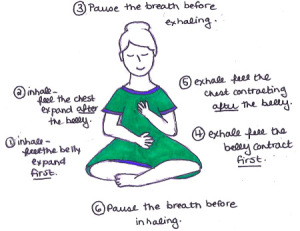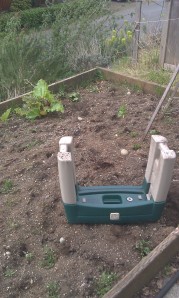Therapeutic Yoga

This past November I dashed late into a networking event at a new-ish yoga studio in my neighborhood-walking distance from my house. BendnMove owner Tamara Gillest introduced me around. The health care providers offering their services were familiar to me, members of a Business Networking International chapter here in West Seattle. It felt like coming home to a room full of caring practitioners; a chiropractor, a vendor of the Smovey and Nordic walking poles, a life coach and personal trainer, a massage therapist among others. I knew I’d been led to this event and was open to what was offered.
Therapeutic Yoga. I asked Tamara what that might be. I have studied yoga for years and have a morning practice. Over the last few months, walking any distance at all has been challenging because I never know when the sciatic pain will begin. It is a pain that makes me cry out and wonder if I can make it home. I remember once walking to the hardware store about a mile away and setting out for the return trip with a cloth bag full of six bedding plants. That much weight proved too hard to carry. I set the bag behind a picket fence and limped home to get the car, worried that someone would steal my bag. Of course, this is West Seattle’s Genesee hill and the bag was untouched.
Every time I left home, I experienced breath-shortening anxiety in anticipation of pain. I realized I wasn’t walking every day out of fear of pain. Perhaps Therapeutic Yoga could help with that anxiety.
I signed up for 4 sessions. Tamara sized me up and gave me a series of gentle stretches, hip opening, core strengthening moves to practice. Most importantly, she refocused my yoga breathing to help with the anxiety. It has made such a difference to practice deep breathing, to remind myself to initiate every move with the breath, and to build confidence in my legs and back and core again. I always take my sticks with me to give support when the pain hits. I’m back to 30 minutes of walking every day.
A google search for yoga poses to help with sciatica resulted in poses that are far too advanced for the level of challenge I have. Perhaps it is my age. At 78, it is not a good idea to twist into a pretzel even though I am strong enough to do this. Tamara’s approach is gentle, breath-centered, calming-the very approach I need to help me slow down, relax into movement. If you have suffered chronic pain, you know how difficult it is to manage your thinking about an activity you are about to try. If you know it causes pain, you tense up or you may decide not to bother trying at all.
The last thing I want is to stop moving. I would lose all the benefits of moving that I have mentioned in post after post. Muscle tone weakens; blood flow to the joints slows down; lungs long for fresh air and deep breathing; stiffness sets in. We must keep moving to stay vibrant. Anticipating pain can keep us from setting out. My pain is diminishing ever so slightly and I am able to step out of the house with my sticks and walk for 30 minutes, breathing into the pain, keeping my breaths long and deep and calming.
Here’s what Tamara has to say her Therapeutic Yoga teaching
Yoga therapy provides high quality and skilled therapeutic application of yoga. The education and skills required to work as a yoga therapist surpass those of the average yoga teacher, necessitating a comprehensive understanding of anatomy, physiology and psycho-spirituality from both the eastern and western traditions. Yoga therapy is a highly personalized experience that focuses on your specific condition and needs. It offers a means for safe, personal healing to people living with chronic pain or illness. You can expect a tailored program unique to you that incorporates breath, movement and meditation. Individual yoga therapy is ideal for those with special needs or conditions, who prefer a slower-paced program and a one-on-one setting.
Does yoga therapy replace other treatment modalities?
Yoga therapy is leading edge and uses yoga as a complementary treatment to traditional medical healing practices. Based on on-going treatment studies, these weekly sessions are ideal for those with chronic lower back pain, neck pain and auto-immune disorders such as Multiple Sclerosis, chronic fatigue, fibromyalgia and rheumatoid arthritis, among many chronic conditions.
Thank you, Tamara and Therapeutic Yoga.
Comments? Thoughts?
Be well, Do well and Keep Moving.
Betsy
www.HiHoHealth.com Shaklee product shopping site
www.EmpoweredGrandma.com tails of travel, most recently Mexico



